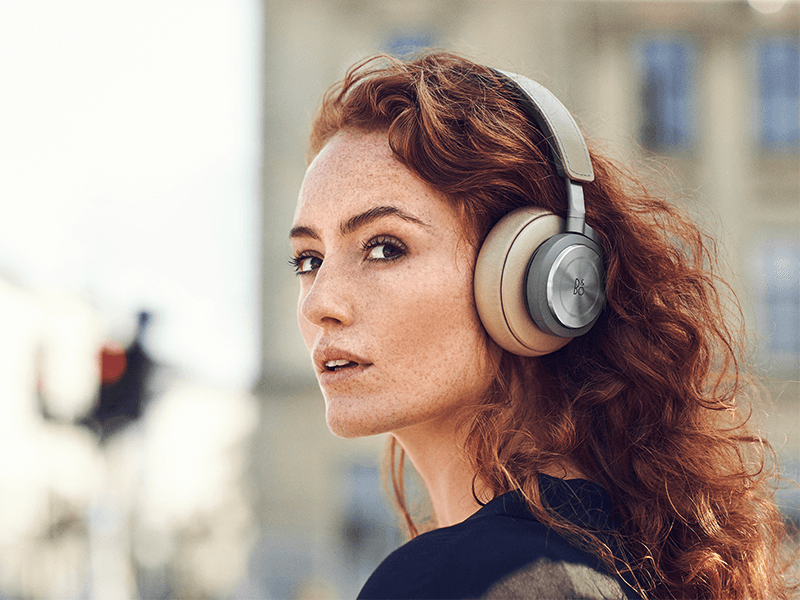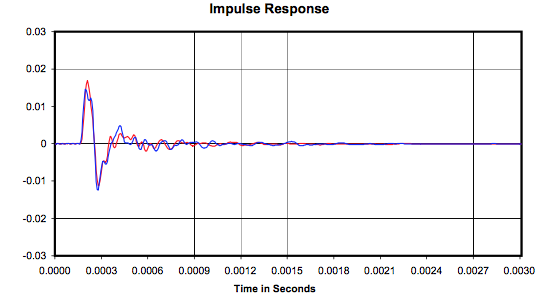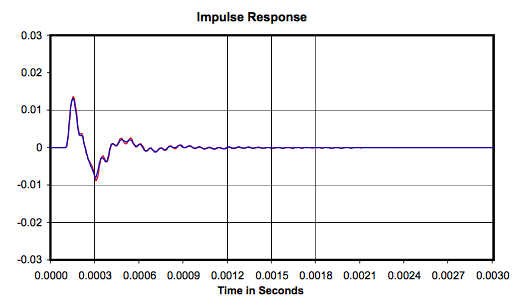We select the perfect match for your ears: ten practical tips

If you have broken headphones for 500 rubles and you are looking for something to replace them, there is a very simple solution - go to the store and buy any headphones at the same price. You will not be disappointed - you can even take a few pairs, so as not to run once again. If the budget is bigger and the requirements are more serious, then in this material we will give some practical recommendations and dispel some stereotypes. We can do without form factors, acoustic design and similar things - many articles have been written about this already.
1. Start with priorities.
Each of us has our own sound requirements - someone wants to be more pussy, someone wants better sound, and so on. But it's not only that. It is important to estimate usage scenarios. If some headphones brilliantly manifest themselves in some situations, this does not mean that they will be just as good in others.

For example, preferring full-size Hi-End models, we refuse to ourselves in normal portable use - for the street they are often too weak insulation and cumbersome design. Choosing wireless models, we overpay for electronic stuffing and agree with some loss of sound quality compared to wired headphones of the same class. And buying headphones for studio monitoring, we risk finding their sound too dry and lifeless for listening to music "for your pleasure."
Universal headphones, equally well suited for all tasks, perhaps, does not happen. Therefore, when choosing, it is necessary first of all to ask yourself the question “for what purposes do I need them”, and clearly prioritize: what qualities are in first positions for you and which are not so important.
2. Sometimes two pairs are better than one.

If the budget allows, it is sometimes wiser to take two different pairs of headphones for different tasks, rather than look for something universal and compromise. For example, it is often very difficult to find something in between a pure studio sound and an embellished “musical” one. If you prefer headphones for listening to music at home that “deliciously distort” musical material, but you also need to work in a studio where you need maximum honesty of sound, you cannot do one pair of headphones. Similarly, if at home you prefer maximum comfort and quality, but on the road you are ready to make compromises - then a set of high-quality full-size headphones and inexpensive overhead or in-ear headphones will suit you.
3. Happiness is not in the brand
If before reading this material you read other articles on the choice of headphones, you probably encountered a phrase like this: "When choosing, you should give preference to well-known brands that have a good reputation in the field of audio - Sennheiser, Bose, Sony." Yes, the products of large companies, starting from a certain price threshold, really have decent sound characteristics, reliability and quality of performance. However, there is an important "but."

Even in high price segments, the name is by no means the guarantor of better quality. Headphone market today is actively replenished with hitherto unknown names. New producers seeking to attract attention often offer a product of very interesting quality at an attractive price. At one time, according to this scenario, Hifiman broke into the market, which has now become a solid player in the audio market. New players continue to appear, mostly from China - and with them come new interesting models.
4. Not all features are useful.
Try to come to the store and ask if you can make a conclusion about the sound quality of the headphones according to their technical characteristics? If the store is not specialized and its employees are not particularly close to the world of audio, you are more likely to be advised to look at the range of reproducible frequencies, they say, the wider it is, the better the sound will be. Contrary to popular belief, this characteristic has no relation to sound quality, moreover, there is no practical sense in it at all.
Let's see. The range of reproduced frequencies, in theory, indicates the sounds of which frequency the headphones are capable of reproducing. At the same time, it is known that the range of sounds heard by a person is 20-20000 Hz, and there is no sense to go beyond the limits of this range for headphones. More importantly, with what volume the headphones are able to reproduce this range. Whatever width of the reproduced range is declared by the manufacturer, in practice, even within the specified segment, the headphones often produce a rather large signal unevenness.
Take a look at the measurement results of the top frequency response (and really great!) Beyerdynamic T1 Tesla. The claimed frequency range of these headphones is an impressive 5-50000 Hz. What do we see in practice?

A person sets a comfortable volume of approximately 1000 Hz. Here the volume on it is raised. But in the area above 10 KHz there is a decline, the graph falls below -20 dB - a drop in volume of more than 8 times). And where is the claimed 5-50000 Hz? Yes, actually nowhere. Rather, Beyerdynamic T1 certainly can reproduce the signals of such frequencies, as, in general, and any other. But with what levels of loudness and distortion? About this "treasured" range of reproducible frequencies does not say anything. He is “silent” both about the character of the sound and about its detail. In other words, almost completely useless feature.
5. Technology needed
Do not rush to conclude that absolutely no interesting technologies are found in the world of headphones. The word “technology” gains weight when it relates directly to the principle of operation of the headphone emitter.
Many people think that ordinary speakers are installed in the headphones - as in the speakers, only smaller ones. Most often the way it is. But along with them, headphones are manufactured with fundamentally different types of radiators — isodynamic, electrostatic, Hale radiators, rebar, etc. Each of them has its own sound features, many provide more accurate and detailed sound than most standard speakers. We advise you to take a closer look at these headphones - especially if you have never heard anything other than standard speakers. Perhaps make yourself a discovery in the field of sound.
6. Not a single sound
And what characteristics of headphones still worth paying attention to? Directly about the sound quality will not tell us any of them. Parameters such as sensitivity and resistance can make a difference when choosing - especially if you are looking for a model for portable use.
The lower the resistance, the easier it will be for your player or smartphone to “shake” the headphones. At the same time, too low resistance leads to an increased level of distortion, which is especially noticeable when listening to not very high quality sources (most smartphones and players belong to them). The higher the sensitivity, the louder the headphones will play - which is also important for smartphones and players, whose built-in amplifiers have limited power.

When choosing portable headphones (if you have a regular player, not an audiophile monster), we would recommend to look towards models with a resistance of 32-64 Ohms and sensitivity from 100 dB / mW.
If you choose wireless headphones and are quite picky about the sound quality, you can pay attention to their support for aptX technology, which provides enhanced quality of audio transmission via Bluetooth. Plus for you can play a role parameters such as battery life, the presence or absence of an active noise cancellation system.
7. Listen, listen and listen again!
Review articles in the network and audiophile forums can serve as good assistants in the selection of headphones. If you are a beginner, then with their help you will get a good educational program on the topic. In addition, experienced lovers of good sound will be able to direct your search in the right direction, suggest which models to search for your conditionally perfect sound.

Nevertheless, making a decision on buying headphones (especially expensive ones) without self-dating with them is practically the same as buying an expensive classic suit without fitting, hoping that it will sit perfectly. Having “tilted” the headphones with your hands, even for a short time, you will be able to evaluate not only the sound quality, but also the comfort of fit, the quality of performance, the level of sound insulation and other important parameters for you - up to the convenience of the wire ... You can do it in almost any store, selling audio equipment.
8. Believe only yourself
From an objective point of view, the sound quality is determined by two main parameters. The linearity of the amplitude-frequency response is responsible for the frequency balance of the sound; simply put, for its naturalness. The resolution of the headphones, the refinement of the timbres, the quality of the construction of the scene, and the overall detail of the sound depend on the resolution of the headphones. It, by the way, is sometimes imitated due to "raised" high frequencies.

From the subjective point of view, all these parameters can be absolutely on your side. It is likely that, after reading laudatory reviews about the natural and detailed sound of MyST IsoPhones, you would prefer them less linear and detailed Audio-Technica ATH-W5000 for the fact that they already very tasty "kosyachat" sound, with vehement expressiveness giving female vocals and jazz instruments. The perception of sound is no less individual than your personal musical preferences. Therefore, when choosing headphones - and in general, any sound-reproducing devices, we advise you to look less at opinions from forums and seller's advice. And more to believe your feelings - to listen to music for you.
9. Break stereotypes
There is one stereotype in the headphone industry, so ingrained that many, including experienced sound lovers, hold it in their heads as something that goes without saying. It sounds like this: “In-ear headphones at an equal cost always sound worse than full-size ones. And the level of top full-size headphones for plug-in is simply unattainable. "
Where this stereotype came from is not known for certain. To reality, he has only an indirect relationship. Recall that the sound quality consists of two main parameters - linear frequency response and resolution (we talked about this above). Leave alone the first (like, no one argues that in-ear headphones can play quite smoothly) and talk about the second.
Resolution is actually the level of information that the headphones provide when playing audio. This headphone parameter is determined by how inert their emitters are, the lower the inertia, the higher the resolution. Now let's think, will the inertia of a large emitter be lower than that of a small one? Far from a fact, and, even, rather the opposite - the larger and heavier the emitter, the more difficult it is to extinguish its oscillations. Reinforcing emitters have a very low inertia — as the smallest of them all, they are installed into high-quality in-ear headphones. Large emitters of top full-size models, however, also have low inertia. Let's take a look at the inertia measurements of the full-size Sennheiser HD800 and plug-in Etymotic ER-4SR. (data from innerfidelity.com):


And those and other headphones show a very good result, but Etymotic reinforcement is still somewhat more playful. But the cost of Sennheiser is several times higher, and they may well claim to be the status of "top" full-size headphones.
10. Quality is not proportional to the price.
If you want to buy high-quality sound for relatively little money, there is a way. How? Search among B-brands. Such companies as Dunu, GAL, TFZ, Harper, Russian MyST, good old Hifiman and some others offer a number of models with a very favorable price-quality ratio. You should not rely on all the product lines of each of these brands, however, digging into the forums, you can easily find those models that have earned a reputation among users. We can recommend Hifiman RE-400, Kitsound Mini Black, Dunu DN-12, Gal Solo SEM-8105, MyST IsoPhones, Harper HB-212 and HB-203, Astrotek Ax-35 and Ax-30. But - what we will not tire of repeating - all you should definitely listen to yourself.
